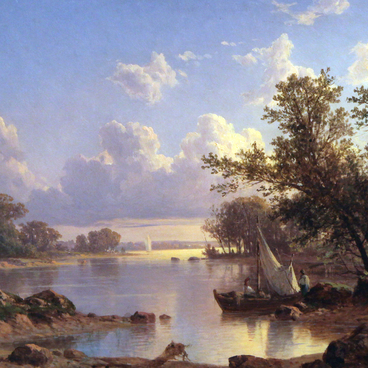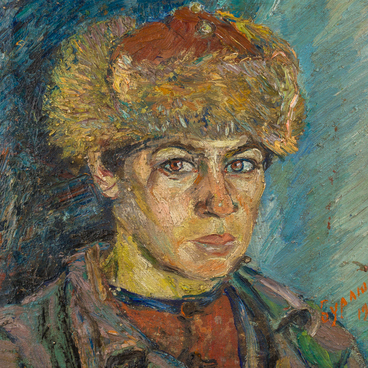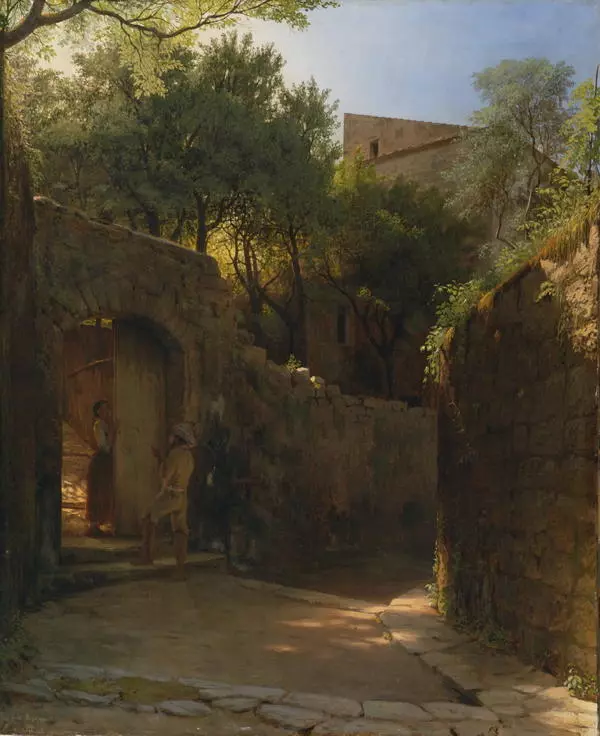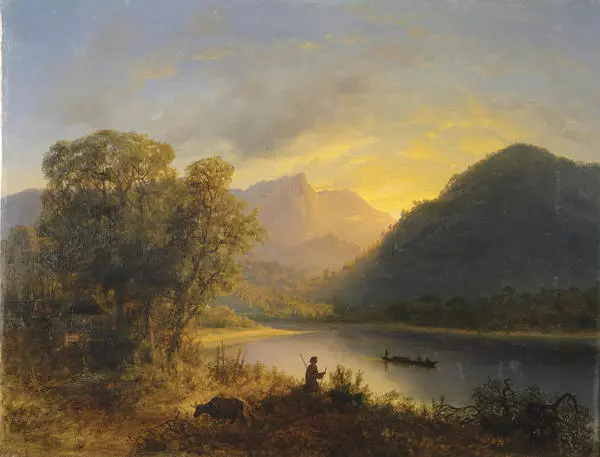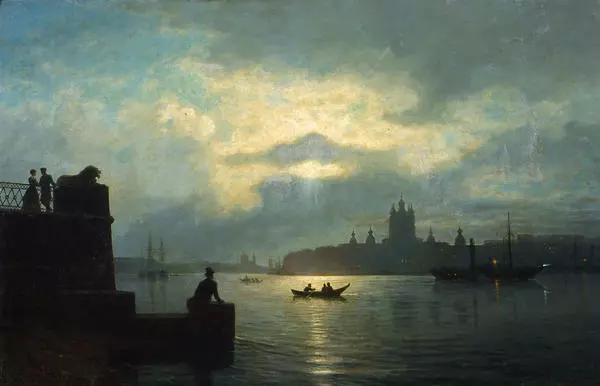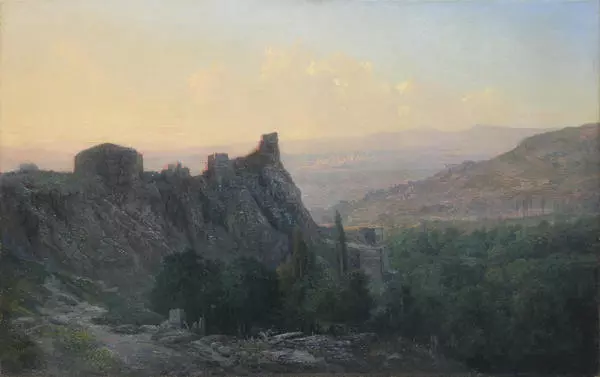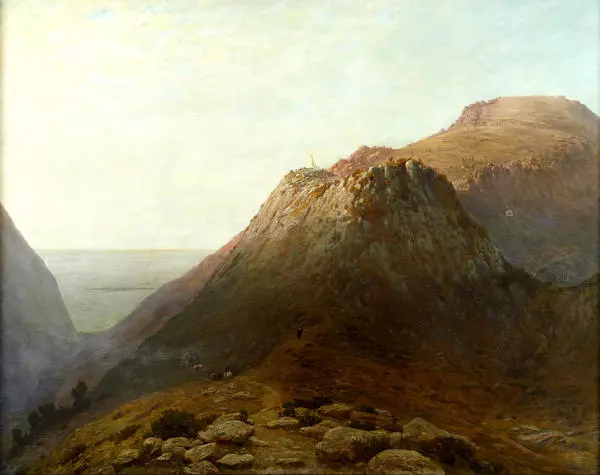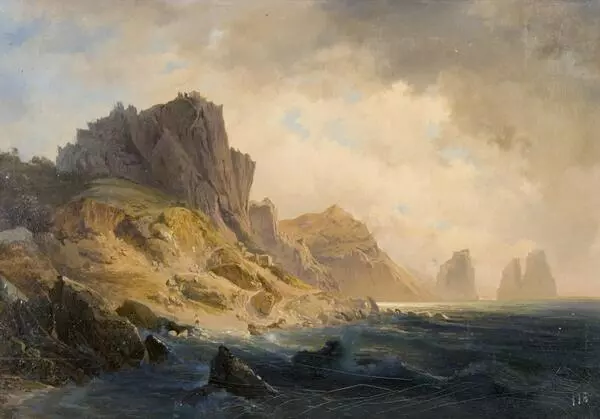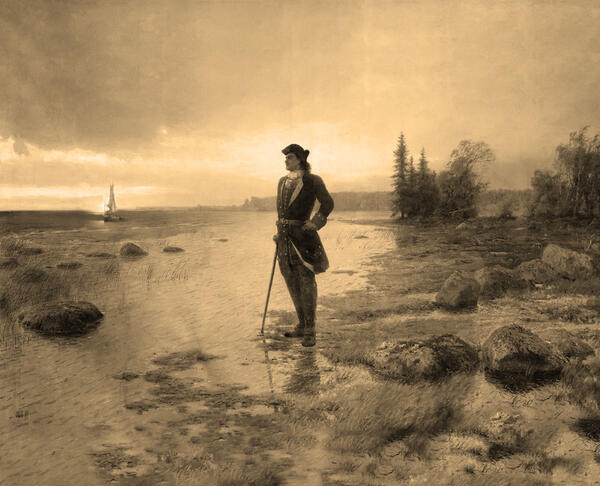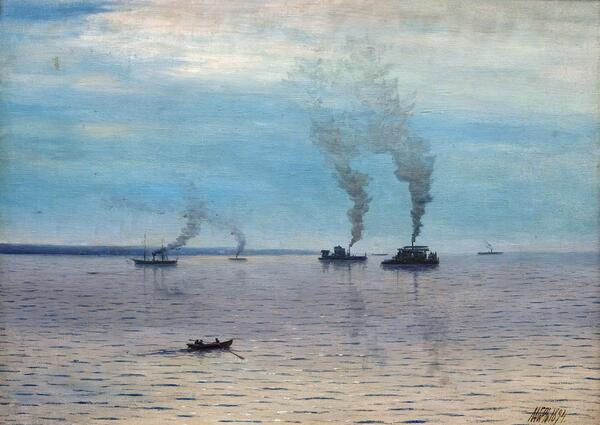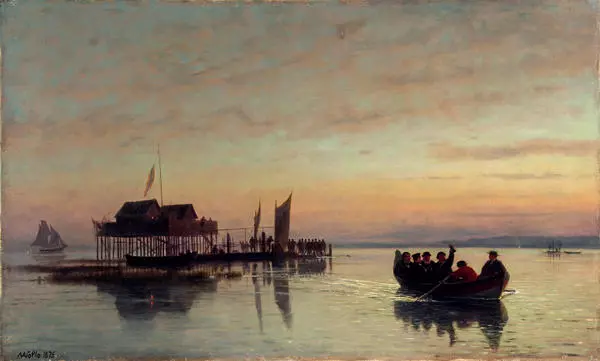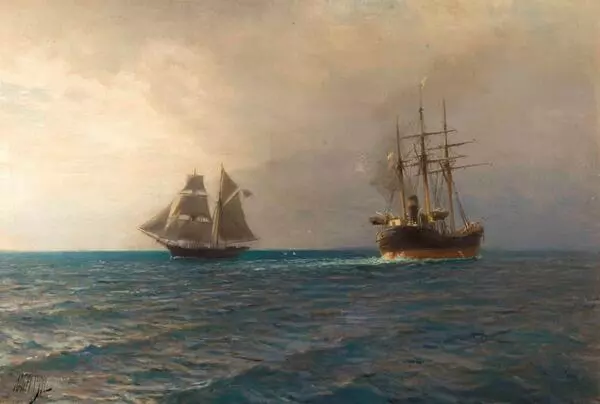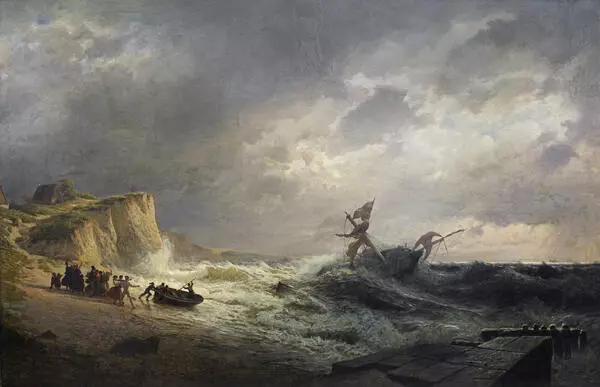The Italian Mountain Landscape was painted by Lev Feliksovich Lagorio in 1865. It was a period when following one of his regular trips to the Caucasus the artist finally settled in St. Petersburg. The artist spent summer months on vacation in Sudak, Crimea, where he had a well-equipped studio. This canvas may have been painted there.
The viewer sees a small and picturesque street with simple snow-white houses, the semi-ruined castle walls and a narrow cobblestone road. The central part presents a classic scene in an idyllic Italian genre. A brightly clad woman is going down the road carrying a load on her head. A colorful group is moving up the road from the opposite direction: a man servant walking on foot and his master in dark-colored clothes astride a donkey with a red umbrella in his hand to protect himself from the sun.
Lagorio’s artwork in the 1860s was represented primarily by lovely and unassuming landscapes. The talented seascape and battle painter well-known in the world of art was born in Feodosia into a family of a merchant and Vice-Consul of Sicily. Lev Feliksovich spent his childhood and adolescence in Crimea, which left an imprint on his life and artwork. Guided by his earnest interest and love for painting, Lev Lagorio went to study art under the guidance of a seascape painter Aivazovsky where the future artist learned the basics of drawing. He continued his education at the Academy of Art.
The artist’s carefree personality and fiery temperament combined with a deep understanding of Russian psychology defined his painting manner of seascapes and urban sketches, and his reconstructions of battle scenes. His sincere love for Russia made him take Russian citizenship in 1852. Nonetheless, Lagorio took frequent and long trips abroad, visited Finland, Turkey, and Norway.
From his travels he brought back specific reports in the form of canvases. The canvases he brought back from one such voyage and submitted for review by art critics earned him the title of Professor of the Academy of Arts. Lev Lagorio created multiple battle paintings. In 1885, the artist received a major commission for paintings on the Russo-Turkish war themes. Seeking to get in-depth understanding of the subject and create realistic canvases Lagorio visited the places of recent bloody battles.
The viewer sees a small and picturesque street with simple snow-white houses, the semi-ruined castle walls and a narrow cobblestone road. The central part presents a classic scene in an idyllic Italian genre. A brightly clad woman is going down the road carrying a load on her head. A colorful group is moving up the road from the opposite direction: a man servant walking on foot and his master in dark-colored clothes astride a donkey with a red umbrella in his hand to protect himself from the sun.
Lagorio’s artwork in the 1860s was represented primarily by lovely and unassuming landscapes. The talented seascape and battle painter well-known in the world of art was born in Feodosia into a family of a merchant and Vice-Consul of Sicily. Lev Feliksovich spent his childhood and adolescence in Crimea, which left an imprint on his life and artwork. Guided by his earnest interest and love for painting, Lev Lagorio went to study art under the guidance of a seascape painter Aivazovsky where the future artist learned the basics of drawing. He continued his education at the Academy of Art.
The artist’s carefree personality and fiery temperament combined with a deep understanding of Russian psychology defined his painting manner of seascapes and urban sketches, and his reconstructions of battle scenes. His sincere love for Russia made him take Russian citizenship in 1852. Nonetheless, Lagorio took frequent and long trips abroad, visited Finland, Turkey, and Norway.
From his travels he brought back specific reports in the form of canvases. The canvases he brought back from one such voyage and submitted for review by art critics earned him the title of Professor of the Academy of Arts. Lev Lagorio created multiple battle paintings. In 1885, the artist received a major commission for paintings on the Russo-Turkish war themes. Seeking to get in-depth understanding of the subject and create realistic canvases Lagorio visited the places of recent bloody battles.


